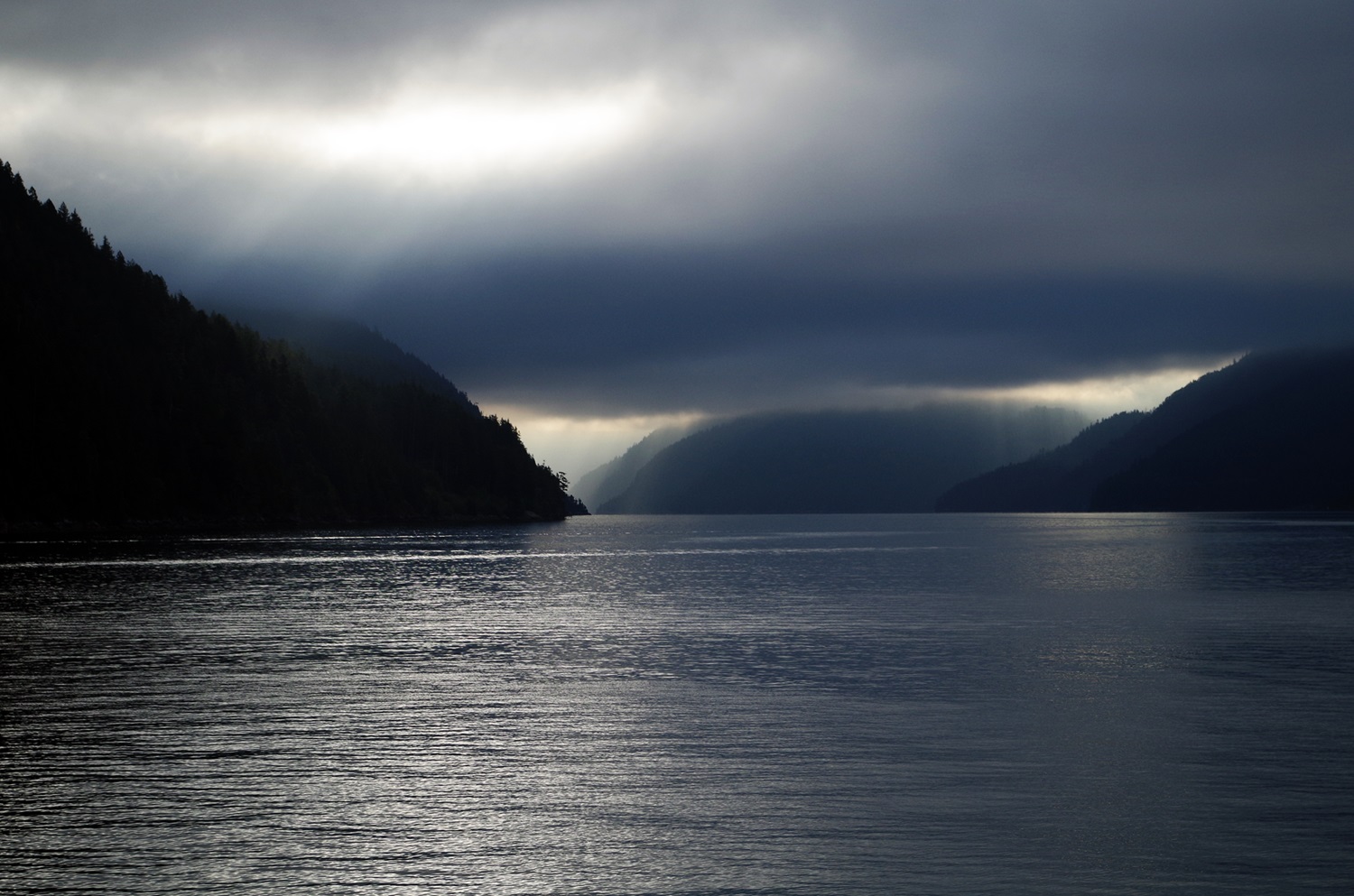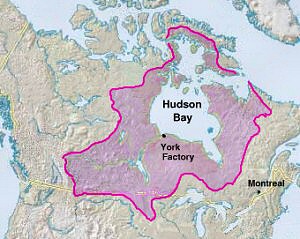Browse "Western and Northwestern Canada"
-
Article
Anson Northup
Anson Northup, the first of many steamers to navigate the Red River from Minnesota to the Red River Colony. Shortly after its arrival in Fort Garry in June 1859, the Anson Northup was purchased by the Hudson's Bay Company and entrepreneur J.C. Burbank, who renamed it the Pioneer.
"https://development.thecanadianencyclopedia.ca/images/tce_placeholder.jpg?v=e9dca980c9bdb3aa11e832e7ea94f5d9" // resources/views/front/categories/view.blade.php
https://development.thecanadianencyclopedia.ca/images/tce_placeholder.jpg?v=e9dca980c9bdb3aa11e832e7ea94f5d9
-
Article
Beaver (Steamer)
From 1862 to 1874 the HBC trader became Her Majesty's Hired Survey Ship Beaver. After the HBC sold the ship in 1874, it was used as a workhorse and tow until 1888, when it was wrecked in the First Narrows in Vancouver harbour. Only a few relics remain.
"https://d2ttikhf7xbzbs.cloudfront.net/media/media/0fe63fc6-63d8-4891-b455-e5b8d41feabe.jpg" // resources/views/front/categories/view.blade.php
https://d2ttikhf7xbzbs.cloudfront.net/media/media/0fe63fc6-63d8-4891-b455-e5b8d41feabe.jpg
-
Article
HBC Trading Posts in Canada
From 1670 until 1987, the Hudson’s Bay Company (HBC) operated hundreds of trading posts in various parts of Canada and the northwestern US. During the fur trade, Indigenous trappers visited trading posts to exchange furs for valued goods produced by Europeans, including metal objects, weapons and glass beads. In 1870, the HBC’s vast territory of northern wilderness (see Rupert’s Land and North-Western Territories) was transferred to the Canadian government, and the HBC gradually transitioned from a fur trading company to a retail establishment. The HBC maintained posts in Northern Canada, however, until 1987. Some settlements that remained in and around the old trading posts developed into cities, such as Winnipeg (Fort Garry), Edmonton (Fort Edmonton) and Victoria (Fort Victoria). Some First Nations that had established themselves near HBC posts also have names that reflect their fur trading history, including Fort Albany First Nation in Ontario and Fort McKay First Nation in Alberta.
"https://d2ttikhf7xbzbs.cloudfront.net/Kugluktuk-Trading-Post.jpg" // resources/views/front/categories/view.blade.php
https://d2ttikhf7xbzbs.cloudfront.net/Kugluktuk-Trading-Post.jpg
-
Article
Inuit Experiences at Residential School
Residential schools were government-sponsored religious schools created to assimilate Indigenous children into Euro-Canadian culture. Schools in the North were run by missionaries for nearly a century before the federal government began to open new, so-called modern institutions in the 1950s. This was less than a decade after a Special Joint Committee (see Indigenous Suffrage) found that the system was ineffectual. The committee’s recommendations led to the eventual closure of residential schools across the country.
"https://d2ttikhf7xbzbs.cloudfront.net/InuitResidentialSchool/Inuit-Residenital-School (Library and Archives Canada_PA-042133).jpg" // resources/views/front/categories/view.blade.php
https://d2ttikhf7xbzbs.cloudfront.net/InuitResidentialSchool/Inuit-Residenital-School (Library and Archives Canada_PA-042133).jpg.jpg)
-
Article
King George's Sound Company
King George's Sound Company (Richard Cadman Etches and Co), founded 1785 in London, England, to trade for furs on the Northwest Coast.
"https://development.thecanadianencyclopedia.ca/images/tce_placeholder.jpg?v=e9dca980c9bdb3aa11e832e7ea94f5d9" // resources/views/front/categories/view.blade.php
https://development.thecanadianencyclopedia.ca/images/tce_placeholder.jpg?v=e9dca980c9bdb3aa11e832e7ea94f5d9
-
Article
Métis Scrip in Canada
Scrip is any document used in place of legal tender, for example a certificate or voucher, where the bearer is entitled to certain rights. In 1870, the Canadian government devised a system of scrip — referred to as Métis scrip — that issued documents redeemable for land or money. Scrip was given to Métis people living in the West in exchange for their land rights. The scrip process was legally complex and disorganized; this made it difficult for Métis people to acquire land, yet simultaneously created room for fraud. In March 2013, the Supreme Court of Canada ruled that the federal government failed to provide the Métis with the land grant they were promised in the Manitoba Act of 1870. Negotiations between various levels of government and the Métis Nation concerning the reclamation of land rights continue.
"https://d2ttikhf7xbzbs.cloudfront.net/media/media/00019b96-4c2b-4fb8-9d1b-58ccf46ec3ae.jpg" // resources/views/front/categories/view.blade.php
https://d2ttikhf7xbzbs.cloudfront.net/media/media/00019b96-4c2b-4fb8-9d1b-58ccf46ec3ae.jpg
-
Article
Nootka Sound Controversy
The Nootka Sound Controversy involved the competing claims of Spain and Britain for control of trade and navigation on the Northwest Coast and in the Pacific Ocean, 1789-94.
"https://d2ttikhf7xbzbs.cloudfront.net/nootkasound/Nootka-Sound.jpg" // resources/views/front/categories/view.blade.php
https://d2ttikhf7xbzbs.cloudfront.net/nootkasound/Nootka-Sound.jpg
-
Article
Prairie Farm Rehabilitation Administration (PFRA)
The Prairie Farm Rehabilitation Administration (PFRA) was a branch of Agriculture and Agri-Food Canada with a focus on Western Canada. It was headquartered in Regina, Saskatchewan. The PFRA also had 22 district offices throughout the Prairie provinces. The agency began in response to the drought crisis of the 1930s in the Prairies. However, for nearly eight decades, it continued to help farmers conserve soil, prevent erosion, develop water resources and manage pasture land.
"https://d2ttikhf7xbzbs.cloudfront.net/media/media/b4c10927-debc-4233-8c47-41315da62b2d.jpg" // resources/views/front/categories/view.blade.php
https://d2ttikhf7xbzbs.cloudfront.net/media/media/b4c10927-debc-4233-8c47-41315da62b2d.jpg
-
Article
Promyshlennik
A Promyshlennik is a Russian (chiefly Cossack) free-lance exploiter of natural resources, notably furs. Like the coureurs de bois, promyshlenniki had a sure instinct for rivers, forests and terrain.
"https://development.thecanadianencyclopedia.ca/images/tce_placeholder.jpg?v=e9dca980c9bdb3aa11e832e7ea94f5d9" // resources/views/front/categories/view.blade.php
https://development.thecanadianencyclopedia.ca/images/tce_placeholder.jpg?v=e9dca980c9bdb3aa11e832e7ea94f5d9
-
Macleans
RCMP Recreates Historic March
Growing up in the small town of Hartney in the southwest corner of Manitoba, Grant Little believed that the Royal Canadian Mounted Police "hung the moon.This article was originally published in Maclean's Magazine on July 12, 1999
"https://development.thecanadianencyclopedia.ca/images/tce_placeholder.jpg?v=e9dca980c9bdb3aa11e832e7ea94f5d9" // resources/views/front/categories/view.blade.php
https://development.thecanadianencyclopedia.ca/images/tce_placeholder.jpg?v=e9dca980c9bdb3aa11e832e7ea94f5d9
-
Article
Red Coat Trail
A number of highways in southern Manitoba, Saskatchewan and Alberta roughly follow the original route. The ride was re-enacted in 1999, the 125th anniversary of the march.
"https://development.thecanadianencyclopedia.ca/images/tce_placeholder.jpg?v=e9dca980c9bdb3aa11e832e7ea94f5d9" // resources/views/front/categories/view.blade.php
https://development.thecanadianencyclopedia.ca/images/tce_placeholder.jpg?v=e9dca980c9bdb3aa11e832e7ea94f5d9
-
Macleans
Romanow Re-elected
Perhaps it should have been surprising. After all, it has been fashionable so far this year to elect Conservative provincial governments, with Tories winning in Manitoba and Ontario.This article was originally published in Maclean's Magazine on July 1, 1995
"https://development.thecanadianencyclopedia.ca/images/tce_placeholder.jpg?v=e9dca980c9bdb3aa11e832e7ea94f5d9" // resources/views/front/categories/view.blade.php
https://development.thecanadianencyclopedia.ca/images/tce_placeholder.jpg?v=e9dca980c9bdb3aa11e832e7ea94f5d9
-
Macleans
Romanow Re-elected With Minority Government
In one stump speech after another during the 28-day Saskatchewan election campaign, Premier Roy Romanow returned to the same refrain. "Don't judge me against perfection," he urged voters. "Judge me against the alternatives.This article was originally published in Maclean's Magazine on September 27, 1999
"https://development.thecanadianencyclopedia.ca/images/tce_placeholder.jpg?v=e9dca980c9bdb3aa11e832e7ea94f5d9" // resources/views/front/categories/view.blade.php
https://development.thecanadianencyclopedia.ca/images/tce_placeholder.jpg?v=e9dca980c9bdb3aa11e832e7ea94f5d9
-
Article
Rooster Town
Rooster Town was a largely Métis community that existed on the southwest fringes of suburban Winnipeg from 1901 until the late 1950s. While there were numerous urban Métis fringe communities on the Prairies and in British Columbia, their history has been relatively forgotten. (See also Métis Road Allowance Communities.)
"https://d2ttikhf7xbzbs.cloudfront.net/media/media/093c5c4d-cdd7-4fe5-b8d1-753c6c5a7dd9.jpg" // resources/views/front/categories/view.blade.php
https://d2ttikhf7xbzbs.cloudfront.net/media/media/093c5c4d-cdd7-4fe5-b8d1-753c6c5a7dd9.jpg
-
Article
Rupert’s Land (Plain-Language Summary)
Rupert's Land was a vast area of northern wilderness; it covered about a third of what is now Canada. From 1670 to 1870, it was controlled by the Hudson’s Bay Company (HBC), which ran the fur trade there. The area was named after Prince Rupert, the first governor of the HBC. In 1870, just after Canada became a country, the government bought Rupert’s Land from the HBC. The purchase changed Canada, making it a large nation stretching across North America. Rupert's Land was eventually divided among the provinces of Quebec, Ontario, Manitoba, Saskatchewan and Alberta, and the Northwest Territories. (This article is a plain-language summary of Rupert’s Land. If you are interested in reading about this topic in more depth, please see our full-length entry, Rupert’s Land.)
"https://d2ttikhf7xbzbs.cloudfront.net/PrinceRupert/hudson_bay_ruperts_land.jpg" // resources/views/front/categories/view.blade.php
https://d2ttikhf7xbzbs.cloudfront.net/PrinceRupert/hudson_bay_ruperts_land.jpg
